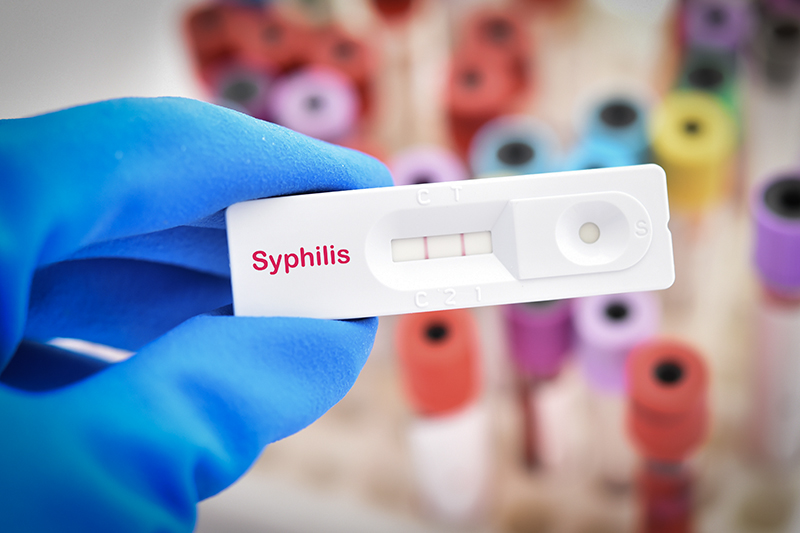Yes, ‘COVID dick’ is real. Here’s what it means.
"COVID dick" is real, and not so spectacular for those who'll suffer long-term ill-effects to their sexual health.

It might have sounded like a bad joke the first time you heard the phrase: COVID dick. Yet, trickling into usage as a blanket term to describe a variety of men’s health and reproductive issues, COVID dick is no laughing matter for men who might suffer erectile dysfunction related to coronavirus.
Reports of former COVID-19 patients who experienced impotency or erectile dysfunction post-infection have proliferated around the globe, alongside scientific research that reinforces the connection. A University of Miami pilot study published in the July 2021 World Journal of Men’s Health claimed to be “the first to demonstrate the presence of the COVID-19 virus in the penis long after the initial infection in humans,” suggesting that widespread cell damage from COVID-19 “can contribute to resultant erectile dysfunction.”
Of course, that study wasn’t the last to demonstrate such a correlation. A few months later, a University of Florida Health study published in the Journal of Endocrinological Investigation found that “men with COVID-19 are more than three times more likely to be diagnosed with erectile dysfunction, than those who are not sickened by the coronavirus.” According to the study’s lead author, Dr. Joseph Katz, “The receptor that the coronavirus binds to is abundant on the penis and testes. The virus can bind to those areas.”
More recently, the tale of a 30-something man who says his formerly above-average-sized penis had shrunk as a result of a COVID infection garnered headlines in less scientific journals, like the New York Post.
For some, the alarming anecdote became fodder for sarcastic discussions of shrinkage, but scientists like Dr. Tom Hope of Northwestern University’s Hope Laboratory in Chicago take these cases seriously. “COVID dick” may not be a technical term, but, as Hope tells Metro Weekly, “I think it is a real thing. It’s just something that’s very hard to study.”
Pointing out that “you need human samples of things to study,” Hope says that acquiring live samples for studies of male sexual health can prove to be a challenge. “Guys for some reason are attached to their certain parts,” he jokes.
Since very early in this pandemic, Hope and his lab have been working with animal samples to study the lingering effects of COVID-19 on organs throughout the body. Using radioactive markers in samples, the scientist and his team pinpoint signals of viral infection in locations both expected, like the lungs, and less expected, at least initially, like the penis and testes.
The Hope Lab originally had developed this probing method for tracking down HIV in the body, before shifting course to make a probe for the then-new coronavirus. “So we started on that, and we were able to get funding, which all things considered was a bit of a miracle,” Hope recalls. After struggling for months to get access to the right facilities, the lab finally moved forward with their first experiments in December 2020. “That first experiment led to this surprising observation, that the male genital tract was lit up with that probe very clearly.”
It would take another year — during which Hope lost his father to COVID, and also nearly lost valuable data when the study’s animal facility was struck by Hurricane Ida — before the lab could repeat their experiments. “One year later, in December of 2021,” says Hope. “We got to do two experiments, and the male reproductive tract lit up again, very clearly. We know this is a thing.”
To paint the picture more vividly, Hope shared with Metro Weekly images from his 2021 studies showing impacts of the virus on the lungs and male genital organs of animal subjects. Between week one and week two, one subject recovered from the infection, and a lesion in the lung healed. However, while signals of the virus inside the lungs decreased over time, the signal inside the penis and testes increased. Although Hope doesn’t yet have enough data to show how the animal subjects “are getting their testes destroyed” by the virus, he believes that his lab’s work is pointing in that direction.
“The virus can go all over the body. We’re starting to figure this out, but our probe is telling us it’s in all kinds of places, and that it can hide there. It can’t come out again, it can’t spread from there, because it’s a respiratory virus, but it can cause health problems. If it’s in your body, in your testes, in your knee, and your brain, it can’t get out to infect the next person. And luckily, it seems like it’s very hard to find the virus in semen, for instance, even if the testes are being infected. Instead, what it seems like you see is this thing of low sperm count.”
Citing the already published studies, he asserts that “the data is really pretty compelling that the virus can mess with male reproductive health three ways.” First, “it can infect tissue in the penis, which can cause erectile dysfunction.” It can also infect and “cause some pretty serious destruction in the testes.” Finally, “there are known examples of decreasing sperm counts and things associated with this.”
Now armed with his own data, and with plans to conduct further study, Hope is preparing to publish his findings. He also readily admits that he has an agenda for promoting good community health. “I’ve been wanting to put this out there, to inspire people to get vaccinated that think the vaccine hurts their reproduction.” In fact, the opposite appears true.
For now, vaccines offer a level of undeniable protection. “I’ve studied viruses my whole life, and different viruses do very different things. I think that hearing my whole life, ‘Why don’t we have a vaccine for the common cold?’ It’s because your respiratory tract is so exposed for aerosols that it’s almost impossible to stop the infection from starting. So, it’s actually rare and a little over the top that we can have a vaccine that, for a little while, actually can protect us from seeing much in the way of symptoms.”
Vaccines are an important tool, but we’ll need to develop other tools for controlling this virus. “This long-COVID, or whatever we’re going to call it, I think is going to be a major issue,” says Hope.
“And so this probe, this approach, may allow us to figure out where the virus is hiding in a person. If we can use that, then maybe this monoclonal antibody better gets to the testes. Or maybe that could help to direct therapy or other novel therapies that could help. So I think we can learn this approach to understand things better. And what’s neat is that this is the second virus this has been useful for, which means it could also probably be useful for other viruses, too.”
Support Metro Weekly’s Journalism
These are challenging times for news organizations. And yet it’s crucial we stay active and provide vital resources and information to both our local readers and the world. So won’t you please take a moment and consider supporting Metro Weekly with a membership? For as little as $5 a month, you can help ensure Metro Weekly magazine and MetroWeekly.com remain free, viable resources as we provide the best, most diverse, culturally-resonant LGBTQ coverage in both the D.C. region and around the world. Memberships come with exclusive perks and discounts, your own personal digital delivery of each week’s magazine (and an archive), access to our Member's Lounge when it launches this fall, and exclusive members-only items like Metro Weekly Membership Mugs and Tote Bags! Check out all our membership levels here and please join us today!























